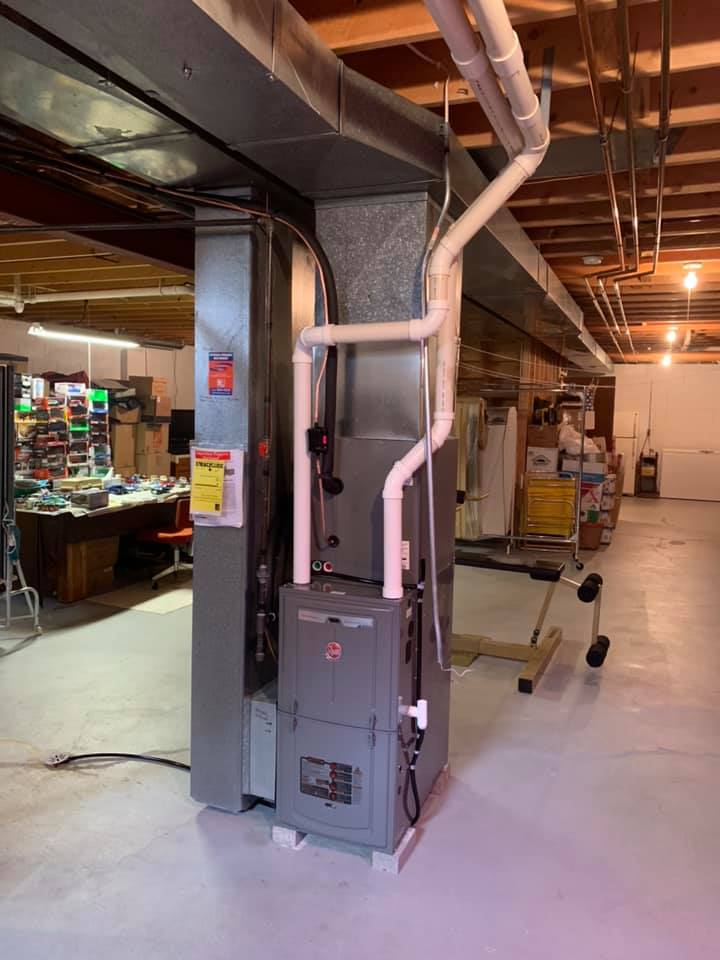Why furnace installation is essential for maximum home heating efficiency
The Ultimate Overview to Furnace Installation for a Cozy Home
Heating system installation is a critical facet of maintaining a comfortable home atmosphere, especially during the colder months. As you take into consideration these aspects, the question continues to be: what actions can you take to guarantee your heater offers you well for years to come?
Sorts Of Furnaces

Gas furnaces are the most typical selection because of their performance and reduced operational prices. They use gas or propane, giving fast heating and consistent performance, making them perfect for cooler environments.
Electric furnaces, while usually simpler to set up and maintain, often tend to have higher functional expenses. They are frequently favored in locations where gas service is inaccessible or for homes with existing electrical framework.
Oil heating systems, though less typical today, continue to be a sensible option in specific regions. They burn heating oil, which can be advantageous during chillier months, yet their dependence on oil delivery presents possible difficulties.
Furthermore, there are high-efficiency versions offered across these types, which can dramatically lower power usage and energy expenses - furnace installation. Eventually, understanding these furnace kinds will assist homeowners choose a system that aligns with their home heating requires, budget, and energy preferences
Choosing the Right Dimension
Selecting the ideal size for a heater is important to guaranteeing optimal efficiency and power performance. An undersized heater will struggle to keep comfortable temperature levels throughout the cool months, resulting in raised deterioration, higher energy costs, and potential system failure. On the other hand, a large heater might cycle on and off too regularly, causing inefficient heating and uneven temperature level distribution within the home.
To figure out the proper heater size, an estimation recognized as the Manual J load calculation ought to be carried out. This procedure reviews various elements, including the square footage of the home, insulation degrees, home window dimensions, and regional climate conditions. This detailed analysis makes certain that the furnace fulfills the particular home heating needs of the room.

Installment Process Overview
In terms of materials, you will require ductwork, insulation, and securing tape to ensure optimal airflow and power efficiency - furnace installation. It is additionally important to have a brand-new heating system filter accessible, in addition to venting products, such as PVC pipeline or metal flue, depending upon the sort of furnace being installed
Security devices, including handwear covers, safety glasses, and a face mask, is also essential to protect against dust and particles throughout installment. Having all these tools and products conveniently offered not just improves the process but also improves the safety and security and efficiency of the heater setup.
Upkeep Tips for Long Life
To ensure the long life of your furnace, it is essential to implement a regular upkeep routine that deals with essential elements of the system. Beginning by changing or cleansing the air filter every one to three months, as a clogged filter can restrict airflow and lower effectiveness. Furthermore, examine and clean the blower assembly to avoid dust buildup that can hinder efficiency.
Following, inspect the thermostat setups and rectify if necessary to make sure accurate temperature law. Examine the ductwork for leaks or obstructions, as this can lead to energy loss and uneven heating. Regularly oil the motor and bearings according to the supplier's suggestions to lessen deterioration.
Professional examinations must happen every year, where a qualified professional can straight from the source evaluate the furnace's total condition, check for gas leakages, and ensure that security attributes are more tips here functioning properly. Lastly, think about setting up a programmable thermostat to maximize power use and preserve constant home temperatures. By embracing these maintenance techniques, you can enhance your furnace's efficiency, prolong its life-span, and eventually appreciate a comfortable and comfy home environment.
Final Thought
